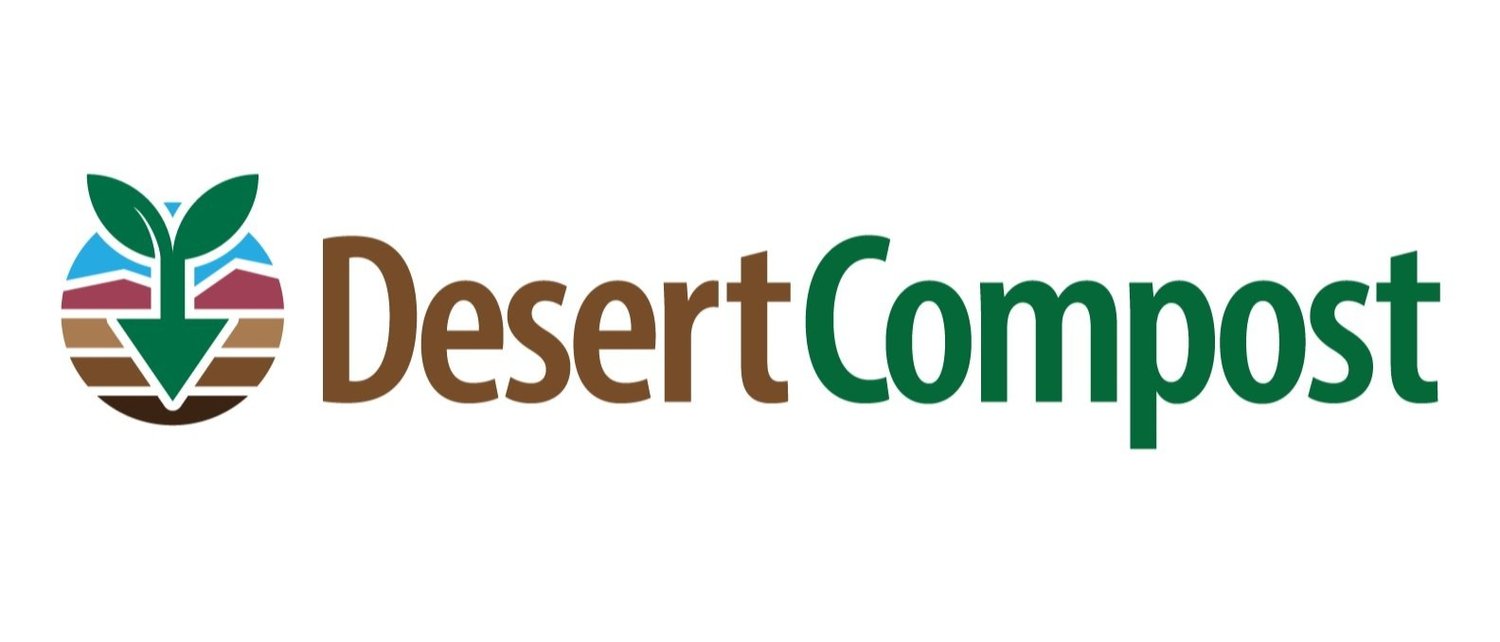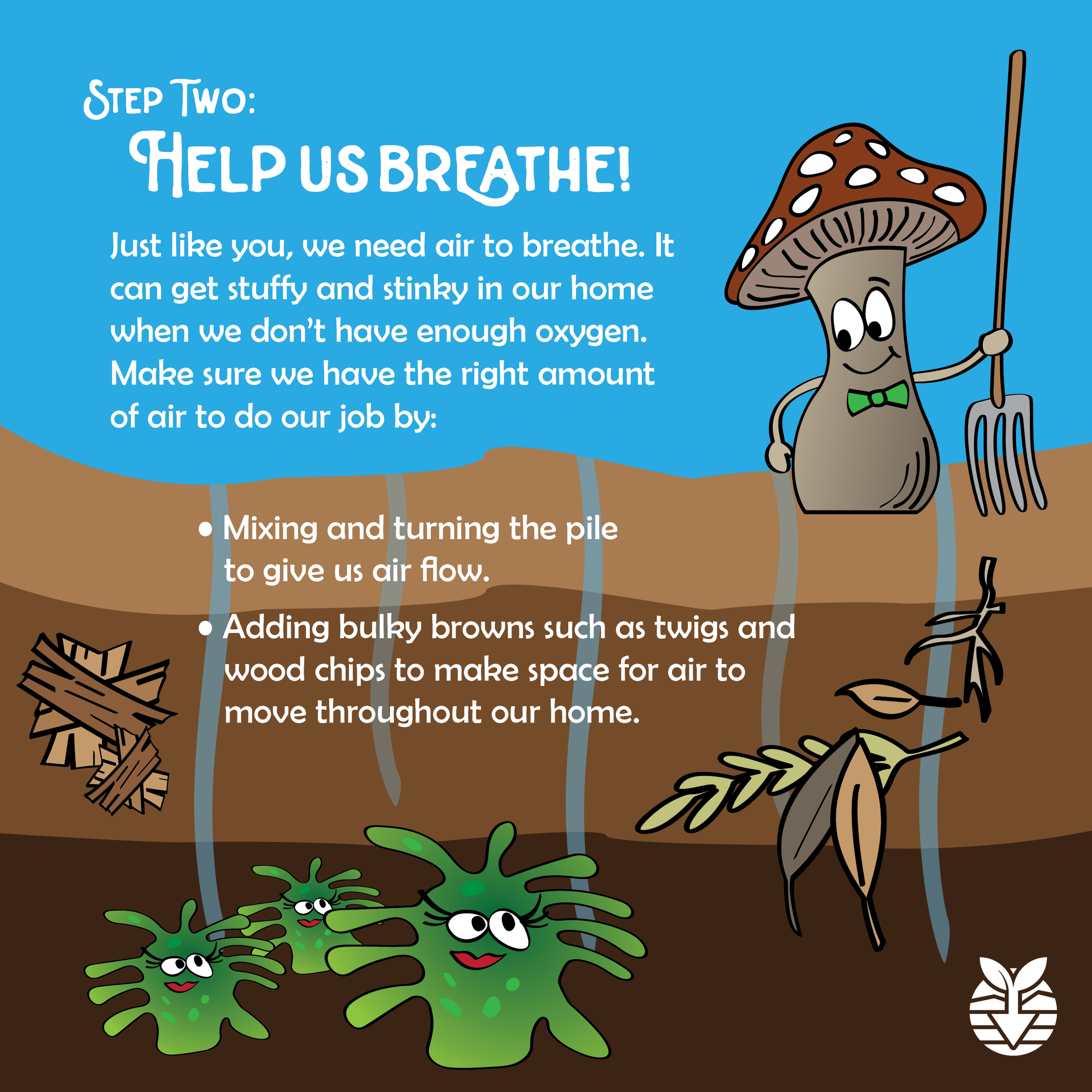Getting Started Guide
Try composting at home!
If you have yard space, it’s easy to get started. Collect the tools and ingredients listed below and start building your own compost pile. If you don’t have yard space, consider starting an indoor worm bin (indoor is best for the desert climate) or becoming a Desert Compost volunteer and bringing your food scraps to one of our community composting sites.

-

Gather tools
Here’s a basic list of things you’ll need to get started:
A compost system (i.e. geobin, wooden or wire bin, tumbler, or a homemade container for composting)
Note: If your compost system doesn’t have a lid, you’ll also want some cardboard or a tarp to cover your compost pile
A compost collection pail for inside your kitchen (get creative here and upcycle an item you already have, like a bucket or any plastic or glass container)
If needed for your system, a pitchfork or manure fork to turn your compost pile
Optional: compost sifter, large thermometer, chicken wire to prevent pests
-

Collect ingredients
Compost is made of 4 main ingredients:
browns (carbon), examples include dry leaves, wood chips, yard clippings, and shredded paper
greens (nitrogen), examples include fruit and veggie scraps, coffee grounds, and grass trimmings
water (choose a location near a garden hose in your yard)
air
More details about greens, browns, and what you can or cannot compost can be found on our Resources page
-

Start composting
Choose a location in your yard directly on soil (not concrete) so that organisms can contribute to the composting process
If you’re using a compost system that requires turning your pile, you’ll need a space 2x as big as your bin
Start with a 6-12 inch layer of browns at the bottom of your pile
Next, add your greens, then add another layer of browns on top and water your pile
Cover with your lid, cardboard, or a tarp and place a big rock or brick on top to hold everything down
Continue adding greens and browns periodically until your compost system is full
Once full, turn your compost pile by moving it into another bin or adjacent location and add more water
Turn your pile and add water weekly for the quickest results
Home Composting FAQs
How long until I’ll have finished compost?
This depends on how much material you have, your compost system of choice, and how often you turn your pile. It could take an individual a year to fully fill their compost bin where as a family of 4 may take 3-6 months. After that, turning your pile every 4-7 days will drastically speed up the process vs letting it sit.
What are some hacks to compost faster?
Add new material using a 50/50 mix (by volume) of greens and browns. Shred everything and cut food scraps into smaller pieces. Make a larger pile and turn it more frequently.
Which is better, composting in shade or sun?
In hot, arid climates like the desert, it’s best to compost in the shade if possible. This will keep your compost from drying out and require less water.
What about pests?
Adding a final layer of browns every time you add material to your compost pile, and covering it, should prevent pests. If pests persist, you may want to put a layer of chicken wire or mesh down below your compost system to prevent critters from digging up underneath your pile.
How much should I water my compost pile?
Compost needs a moist environment, but too much water will reduce the oxygen available in the pile. We recommend watering once a week, or when you add material, until the pile consistency is like a damp sponge.
Will my compost smell bad?
If you notice an ammonia odor, your mix probably is too rich in nitrogen. If you smell a musty odor, it may be because the mix is too moist. Turning your pile and adding more browns are the best options to reduce smell.
Other home composting resources we like:
Riverside County offers free online classes and videos (in English and Spanish) for both backyard composting and vermicomposting (local residents can also buy discounted geobins and worm bins at those links!)
CalRecycle has a home composting guide, including troubleshooting tips and a PDF for building your own compost bin
WikiHow offers a detailed How to Compost guide with step by step illustrations as well as guides on How to Build a Compost Bin, How to Build a Tumbling Composter, and more
For those who like YouTube, check out GardenFork (DIY bins + compost basics) and Compost Fairy (long and short videos on all things compost, how to, tips and tricks)







